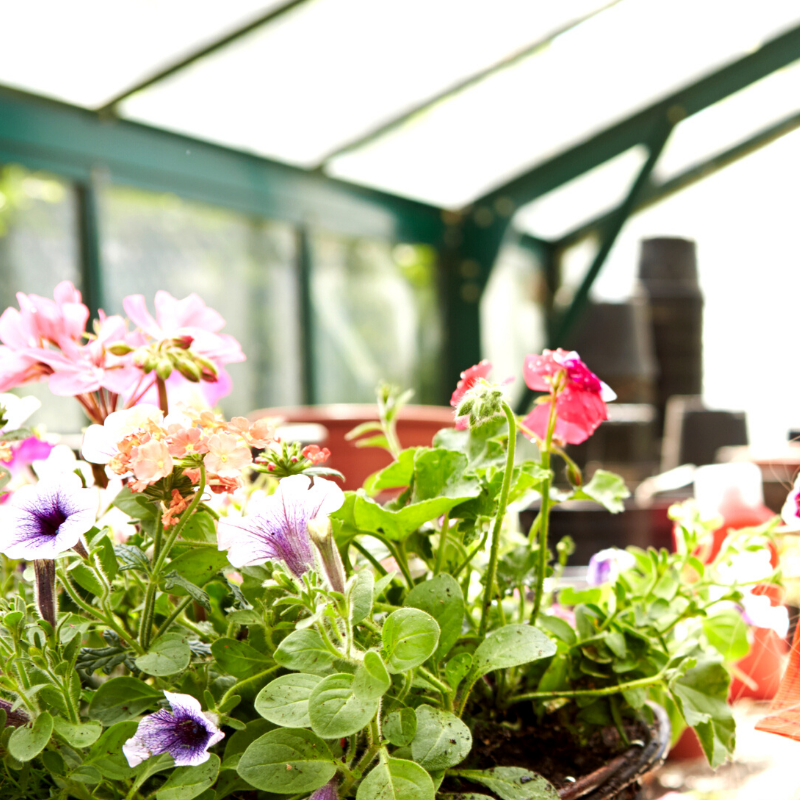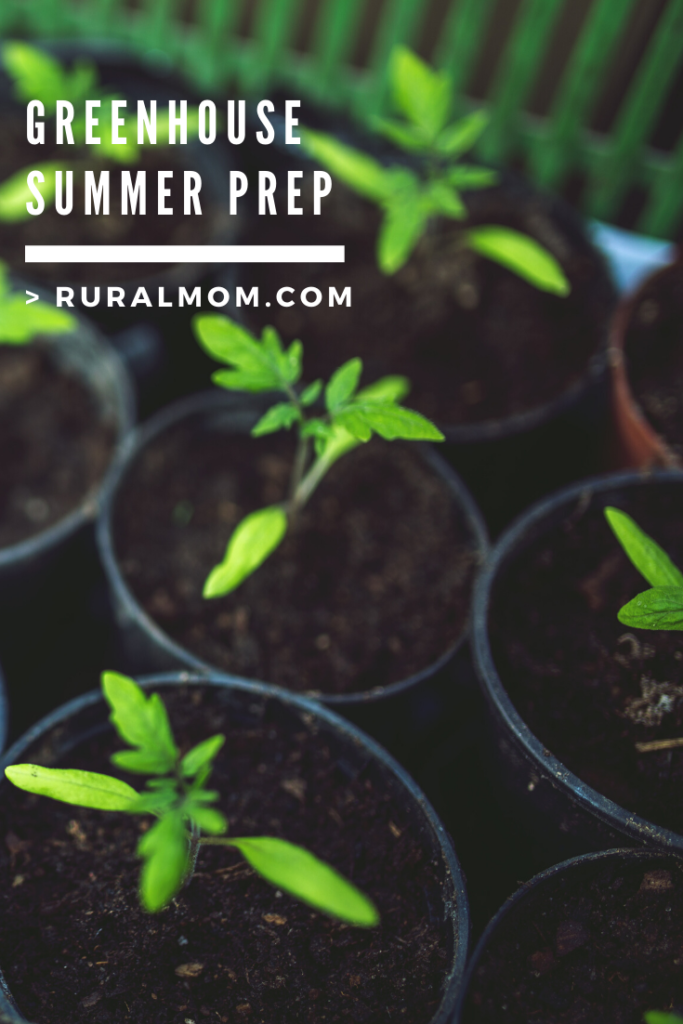A greenhouse is designed to provide ideal growing conditions for plants through all seasons. However, in some places the temperature can soar during the summer and this can hamper plant growth.
Other adverse affects include delayed flowering, smaller flowers and smaller leaves. The amount of preparation you need to do for your greenhouse will depend on where you live and the local weather conditions.
I’m in Kentucky, where we often see summer temps in the high 80’s and 90’s. I tend to move everything with the exception of my tropical plants outdoors to enjoy the full sunshine and to benefit from rain and pollinators.
Need a little help with your summer prep? These tips will help you prepare your greenhouse for summer and make it easier to manage:
Clean Through The Seasons
You need to clean your greenhouse regularly and keep it well organized. For summer, I clean right after I move the last of my spring starter plants to our garden.
Cleaning quarterly makes it easier to switch between growing seasons. It helps ensure all plants, fruit or vegetables have ideal growing conditions. Clean and inspect tools, too, to make sure they are in good repair.
Help Your Greenhouse Breathe
You need to carry out a full internal and external health check for your greenhouse. You should check for any air leaks, broken or damaged panels and that all equipment works.
The most important things to check are the temperature control system and ventilation system.
Ventilation is critical to controlling the internal temperature of your greenhouse during the summer. You should have around 20% of your greenhouse floor area covered by ventilation systems. You will notice better air flow through a combination of roof and side ventilation. This includes automatic or manual louvres as well as extractor fans, air blowers and air circulation fans.
Depending upon the set up of your greenhouse, you will also need to check you have enough shade covers suitable for your plants. Shade covers will help reduce the amount of heat warming up the greenhouse. In a pinch, you can use white linen sheets to cover the greenhouse (if you have a small one) or a combination of sheets, propped up with sticks inside larger green houses.
Load Up On Summer Refreshments
Check your watering system. Misting systems and drip irrigation systems can work on timers and need to be set for the type of plants you grow. If set correctly, you can control the humidity level inside the greenhouse more effectively.
You can also help control the humidity by having a tray of water in the greenhouse.
If you manually water your plants, you should always have a full watering can warming in the greenhouse. It is much better to water plants with warm water rather than shocking their roots with cold water direct from taps. Regular watering and preventing soil from drying out will help maintain the right level of humidity in the greenhouse.
Evict Unwanted Pests
Check for insects and pests. As summer approaches and the weather warms up, insects and pests can infest your greenhouse if you are not careful.
You also need to check all plants for signs of disease or insect infestation. Remove any diseased plants and get rid of infested soil. You should never put diseased plants on your compost pile as this will only spread the disease further.
Check In Daily
During summer, you should regularly check temperature and humidity levels and adjust the climate controls as necessary. In warmer regions you could switch off greenhouse heaters during the day to conserve energy.
However, you should monitor the temperature carefully as it can drop sharply at night. If this is the case, adjusting the automatic thermostat settings to maintain a set temperature will suffice. The automatic setting should only activate at night, but you will need to manage ventilation systems during the day.
If you don’t have an automatic setting in your greenhouse, control the temperatures with your ventilation flaps. When cool at night, close all your flap and seal the greenhouse tight. Open it up in the morning to encourage airflow and to keep from over-heating.
Overall, shading, ventilation and watering are key factors required to control the temperature and level of humidity in a greenhouse. If you manage the climate in your greenhouse properly, you will enjoy larger yields and higher quality plants.




